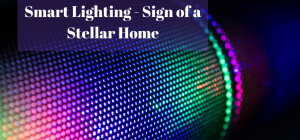 In order to create a successful film, you will need some essential components such as a good storyline, well-cast actors, a reliable film crew, and an incredible set. But, when you specifically want to have an evocative impression on the audience, your film needs to look visually compelling. And, to have this quality, you will need to have technical knowledge and experience in video production. It implies that you will have to utilize the jaw-dropping lighting techniques and cinematic shots to deliver whatever you want to say in the video perfectly within each and every scene.
In order to create a successful film, you will need some essential components such as a good storyline, well-cast actors, a reliable film crew, and an incredible set. But, when you specifically want to have an evocative impression on the audience, your film needs to look visually compelling. And, to have this quality, you will need to have technical knowledge and experience in video production. It implies that you will have to utilize the jaw-dropping lighting techniques and cinematic shots to deliver whatever you want to say in the video perfectly within each and every scene.
When you aim to create a series of natural-looking and stylized scenes, you will definitely need to have proper lighting techniques. Because your scenes have to relate to real-life just like digital sensors. However, you can’t expect films to react to light as well as our eyes do. This is one of the main reasons that you always wonder why film sets are overly lit all the time and why there are a lot of different light sources for different purposes.
In case you’re planning to turn into a writer, director, cinematographer, opening up an online video editing service, or whatever individual who holds an innovative job in a film team, you’ll have to become familiar with a portion of the essential lighting methods regularly utilized in filmmaking. Fortunately, we are here to demonstrate those professional video production lighting techniques to use in filmmaking. Let’s know what they are.
- Key Lighting
The main light is known as the key light of a subject or a scene. This implies it’s typically the most grounded light in every scene or photograph. You will always have to set up the key light, even if your crew has got a convoluted multi-light arrangement for the film. Anyways, you don’t have to put your main light facing the subject all the time. If you want to place it in the corner, place it. As simple as that. In fact, placing it from behind or side creates a darker mood. But keep in mind that you should not place it beside or near the camera because it ultimately makes direct lighting for the subject. - Fill lighting
A key light can make shadowy, or dark areas in the scene, so the fill light is used to remove that darkness from the scene. It is observably less serious and put in the other direction of the main light. As a result, it allows you to include more dimension to your frame. Since the point of fill, lighting is to take out shadows, it’s fitting to put it somewhat further or you can potentially use a reflector to diffuse it (set around 3/4 inverse to the key light) to make milder light that spreads out uniformly. Key and fill lighting can add perceptible dimension and depth to any object, so they are just enough to make your scenes look good. - Side Lighting
Obviously, side lighting works for enlightening the scenes from the sideways. It is regularly utilized without anything else or with only a faint fill light to provide your shot a sensational state of mind or chiaroscuro lighting. To truly accomplish this impact, your sidelight ought to be solid to make solid differentiation and low-key lighting that uncovers the surface and highlights the forms of your subject.
At the point when utilized with a fill light, you should lessen down the strength of fill light to 1/8 in order to keep a dramatic feel and look of your shot. - Soft Lighting
Though soft lighting isn’t a procedure to refer any direction of lighting, nonetheless, it’s a technique. You can use soft lighting for any situational reasons as well as aesthetic reasons in order to wipe out brutal shadows, make drama, recreate unobtrusive lighting originating from outside, or the majority of the above mentioned. - Ambient Lighting
In order to create a well-lit shot which is firmly like or far superior to what we find in real, utilizing artificial light sources is the best idea. However, you can use ambient lights in moonlight, sunlight, street lamps, and almost everywhere in the scene.
It’s ideal to make use of natural light when you are shooting in the day, outdoors. In fact, you can use a secondary light to supplement the subject. Just in case, if you want to shoot outdoors, early evening, late afternoon, or early morning are the perfect times. The one and only drawback is the strength of the light and the sunlight is not constant so the color keeps changing. So, you have to plan your shoot while keeping that thing in mind.




